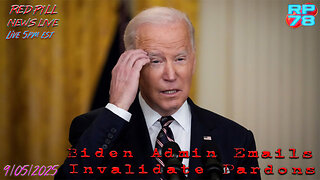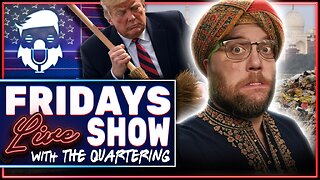Premium Only Content

EPISODE 33: MATCHBOX CARS PART 2
Lesney gradually increased the number of models in its standard Matchbox Series range from three in 1953 to 75 in 1960.[8] The "1-75" range would then remain at 75 models for almost 40 years. When a new model was released, an existing model was discontinued, its number being re-allocated. This meant that dealer display stands only had to accommodate 75 models. New owners Mattel expanded the regular US market Matchbox series to 100 models for 1999[8] but changed it back to 75 models for 2001.[8] The US range was again increased from 75 to 100 models for 2008,[8] and then further expanded to 120 models for 2012 and then to 125 in 2016.[8] These changes were not applied in all markets.[8]
The actual numbering of the 1-75 series number on the individual models (starting in the mid-'50s, numbers were cast onto the baseplates) was discontinued in the Universal era. This was in part due to the new concept of offering country-specific lines of models for many of the key markets, which led to the same castings being used under different numbers in different markets. In recent years (Mattel), a sequential casting no. (e.g. MB687) – unrelated to any 1-75 number used in any market – is cast onto each baseplate. The relevant 1-75 series number is printed on the blister pack or box.
(Other Matchbox ranges also had identifying numbers cast on their bases, many of which were reallocated as older models were retired and new ones introduced. The numbering conventions are listed in the Series Overview section below. However, with the exception of the Yesteryear line, which was held to 16 models for well over a decade [before being expanded greatly], there was no other case of a strict series size limitation by Lesney.)
-
 LIVE
LIVE
Red Pill News
3 hours agoBombshell Biden Docs Invalidate Autopen Pardons on Red Pill News Live
3,522 watching -
 9:36
9:36
Silver Dragons
2 hours agoGold Price NEW ALL TIME HIGH - $5,000 GOLD NEXT?
3.81K1 -
 LIVE
LIVE
LFA TV
11 hours agoLFA TV ALL DAY STREAM - FRIDAY 9/5/25
911 watching -
 13:43
13:43
The Kevin Trudeau Show Limitless
2 days agoClassified File 3 | Kevin Trudeau EXPOSES Secret Society Brainwave Training
86.8K18 -
 1:11:24
1:11:24
vivafrei
6 hours agoDearborn Heights Police Have Been CONQUERED! Gender Madness on PASSPORTS! Canada Stuff & MORE!
84.2K44 -
 1:44:43
1:44:43
The Quartering
5 hours agoConservative Scam Busted, Black Fatigue Hits Airlines, Kimmel Meltdown
109K43 -
 39:07
39:07
Tudor Dixon
2 hours agoRFK Jr., Big Pharma, and the Hidden Risks of SSRIs in Pregnancy | The Tudor Dixon Podcast
4.51K -
![MAHA News [9.5] RFK Lights Up Congress, CDC House Cleaning, Fight Over Vax Mandates For School Children](https://1a-1791.com/video/fww1/b9/s8/1/i/h/m/f/ihmfz.0kob-small-MAHA-News-9.5.jpg) 1:35:42
1:35:42
Badlands Media
13 hours agoMAHA News [9.5] RFK Lights Up Congress, CDC House Cleaning, Fight Over Vax Mandates For School Children
19.3K3 -
 59:29
59:29
The Tom Renz Show
2 hours agoWho Is Undermining Trump?
9.92K6 -
 1:00:55
1:00:55
Mark Kaye
6 hours ago🔴 Trump Tells Tech Tycoons It's Time To Pay Up!
26.9K6